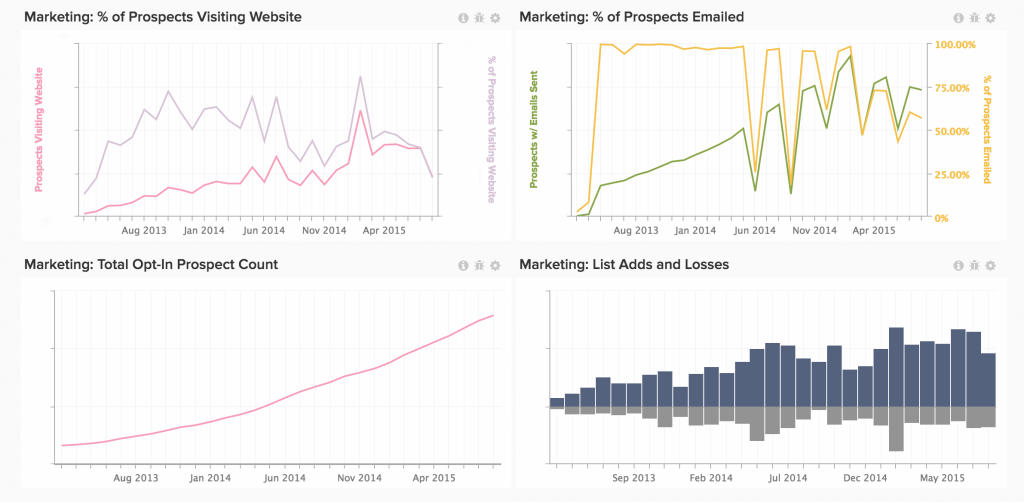Just over two years ago, Pardot was acquired by the world’s #1 CRM software provider; Salesforce. With this kind of clout, it’s no surprise that Pardot is among the top 5 fastest growing marketing automation providers. Just last month 386 Websites adopted Pardot and started managing their email campaigns, creating landing pages, and monitoring opportunities & leads from its interface.
Pardot is deeply ingrained in the fabric of hundreds of marketing teams (including ours!)—that’s why we built the RJMetrics Pardot Integration. With this integration, customers can effortlessly extract their data from Pardot and analyze it in any way they want: explore activity data to find which actions are correlated with conversion, find the channels bringing in the most qualified leads, and integrate the wealth of Pardot data into the entire customer funnel across many disparate systems.
Connecting Pardot to RJMetrics couldn’t be simpler:
Once you’ve begun syncing your Pardot data with RJMetrics, you can connect that data with other marketing data sets such as Salesforce or customer support software.
For anyone into RJMetrics trivia (and who isn’t), this connector launch is special for me. I wrote the very first Pardot connector in my very first RJMetrics hackathon in April 2013. The code wasn’t pretty, but it let me connect Pardot data to RJMetrics. This data has been the foundation of our marketing analytics ever since. Here’s a look at one of my favorite dashboards:
The top two charts help us understand how well we’re using email as a channel:
- Are our email sends effectively bringing prospects to our blog and website? [Top left chart]
- Are we reaching out to enough prospects in our database? [Top right chart]
The bottom two charts simply track the size of our email list:
- How are we growing the list of email addresses in our database? [Bottom left chart]
- How does that growth break out into adds and losses? [Bottom right chart]
The bottom right chart has turned out to be the most actionable of the bunch. We’ve had a few instances where we saw a spike in unsubscribes that let us know we needed to make some changes to what we were sending to email prospects and how often we were contacting them.
This is just a small sample of the analytics we do on top of this Pardot data. We measure our entire inbound lead funnel—including cohort analysis, which is has been incredibly useful—and measure every advertising dollar we spend on an ROI basis.
If you’re interested in measuring your Pardot data like this, sign up for our upcoming webinar, How to Analyze Your Marketing Funnel Using Pardot + RJMetrics, or sign up for RJMetrics now.

